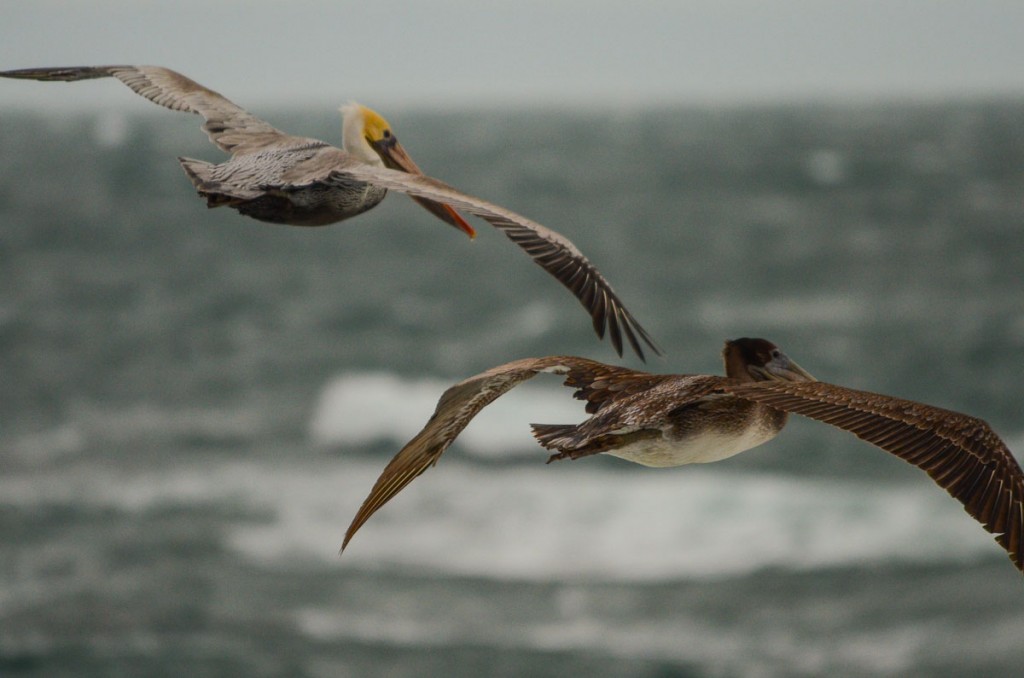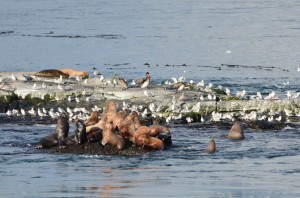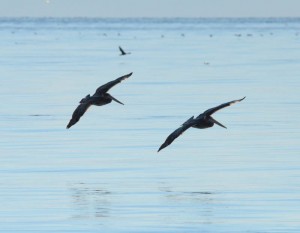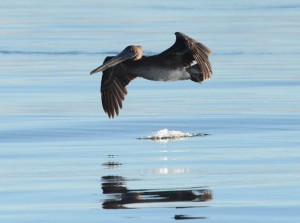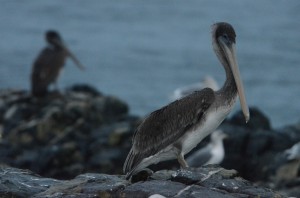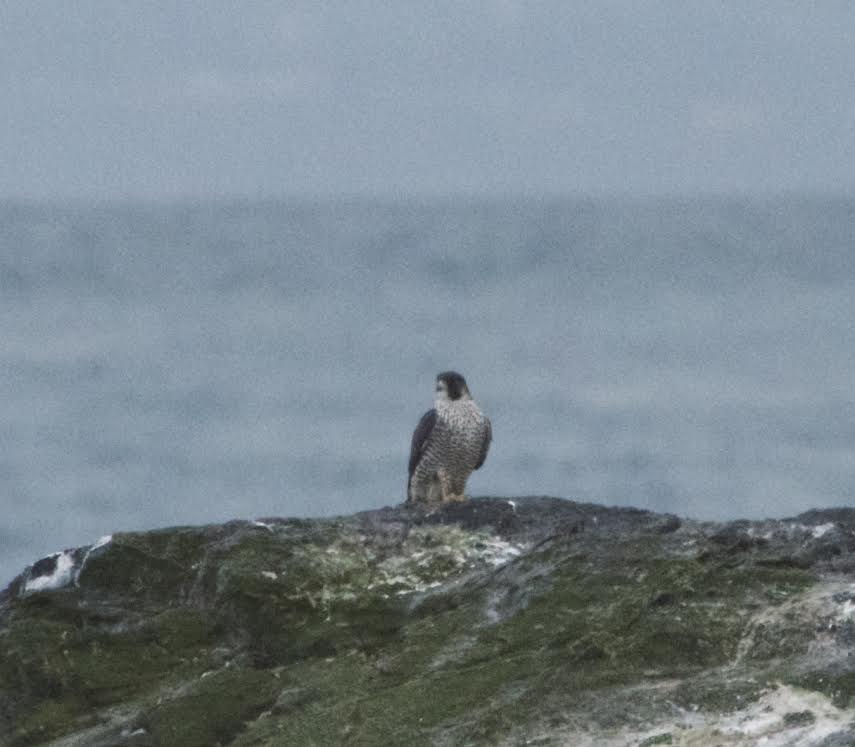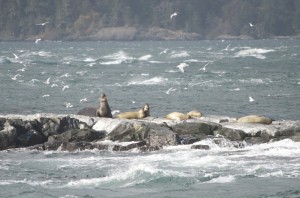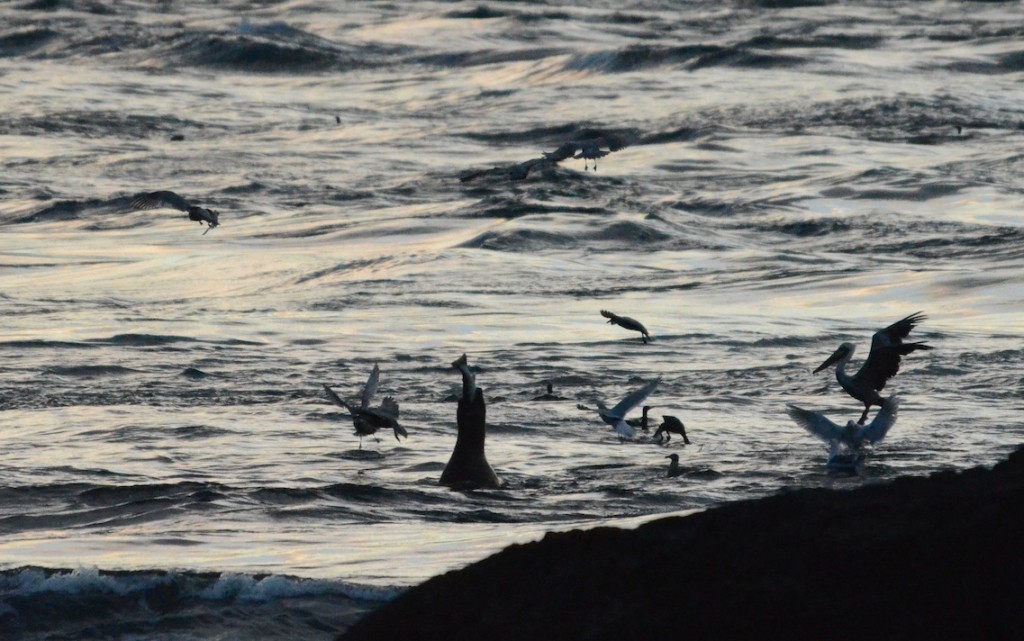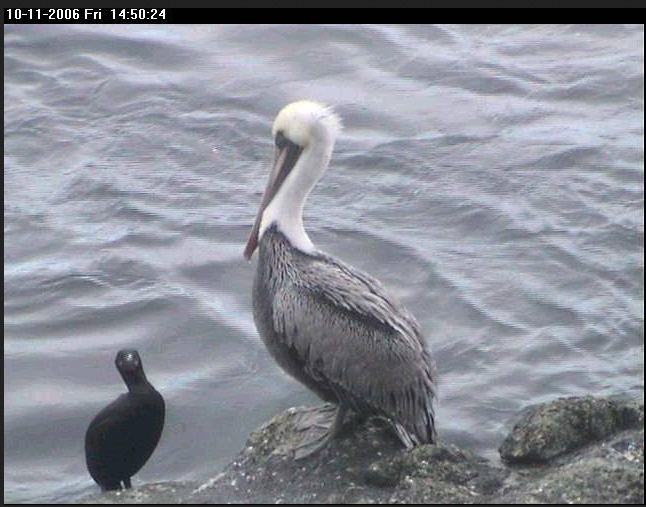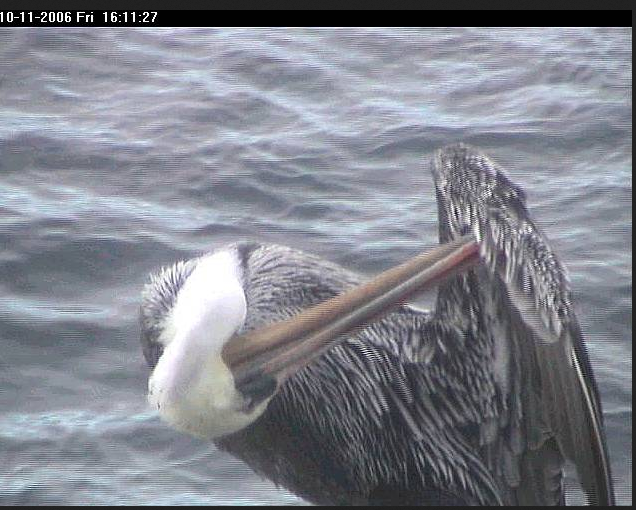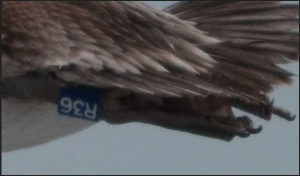
The SGBs (Small Grey Birds). Not only do they all look very similar but they hide their beaks! There was a mix of Black Turnstone, Surfbirds and Rock Sandpipers in the NE bay.
On January 7 an 8th there was a W wind 30-35 knots. The Green Winged Teals returned to the island with slightly higher numbers than last time, they spent their time in the pools on the NE side and picking through the mud with their beaks. I have not seen any Pelicans in about a week and there have not been any Canada Geese here for about two weeks. Karen Benzel from International Bird Rescue contacted us recently to report that Pelican R36 that was seen here in November has been taken in for rehabilitation at Wild Arc in Metchosin.
Census January 8, 2013:
75 Cormorants
7 Harlequin ducks
4 Bald Eagles
1 Mallard
81 Black Oyster Catchers
120 Gulls
17 Green Winged Teals
20 Black Turnstone
10 Surfbirds
10 Rock Sandpipers
1 Kildeer
1 River Otter
20 Harbour Seals
100 Northern sea lions
10 Elephant Seals: 8 female, 2 male






